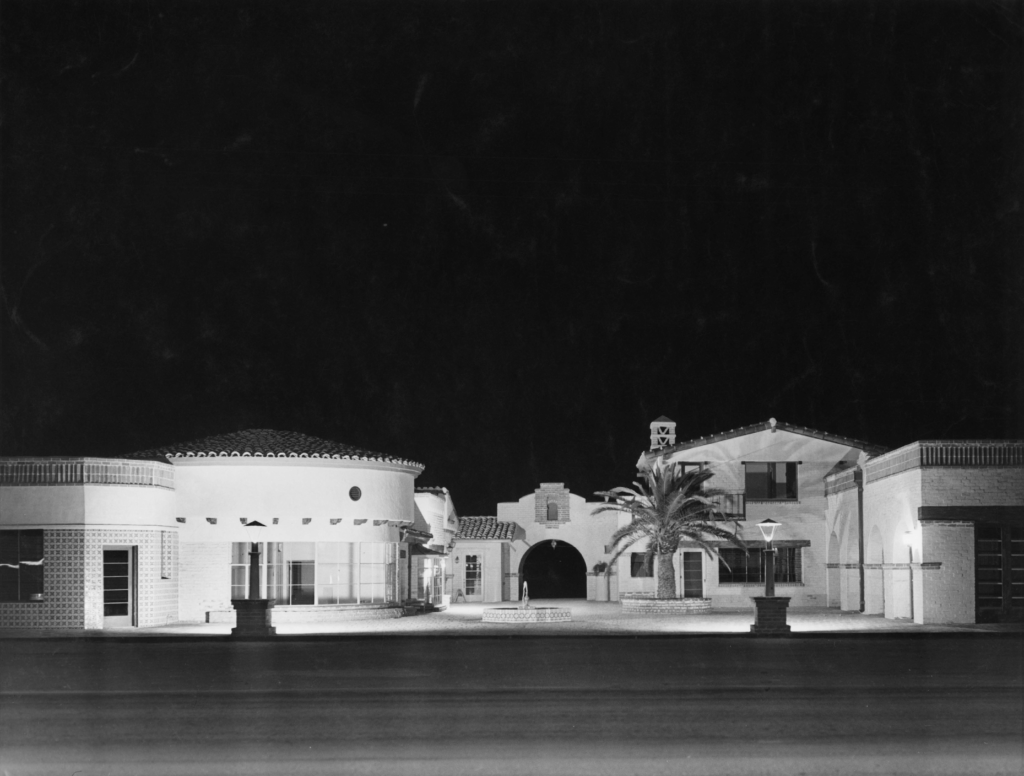

Broadway Village is the result of the iconic collaboration between local real estate developers, John and Helen Murphey and their gifted architect, Josias Joesler.
Built in 1939, Broadway Village captures Spanish Mission Revival architecture in Arizona’s first neighborhood shopping center. Joesler’s use of arches, breezeways, and patios elicit an outdoor lifestyle and Mexican antiquity that convey the romantic cultural heritage of Tucson.
The information used in this section has been obtained from “Joesler & Murphey, An Architectural Legacy for Tucson,” Click here for more info here.
Acknowledgements: Lynn Barr, Framk P. Behlau, Stephen K. Brigham, Richard “Rocky” Brittain, Brian Cary, Robert C. Giebner, Robert Hiller, Harry Isikoff, R. Brooks Jeffery, the late J. Douglas Macneil, Stephen M. Malmoros, Linda Mayro, David Schafer and Marlys Thurber.

Broadway Village in the early 1940’s
History
The first suburban shopping center in the state of Arizona, Broadway Village was unique because it provided a one-stop shopping destination. When it first opened in 1940, the center had a gas station, grocery store, bakery, hardware store, beauty parlor, dress shop, music store and a drug store with a post office and soda fountain.





